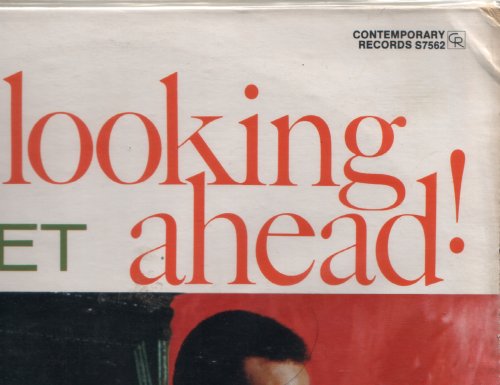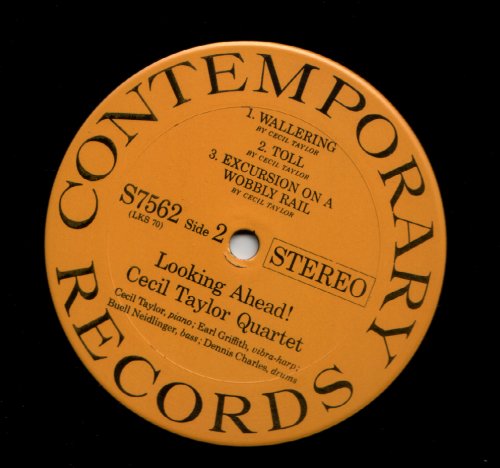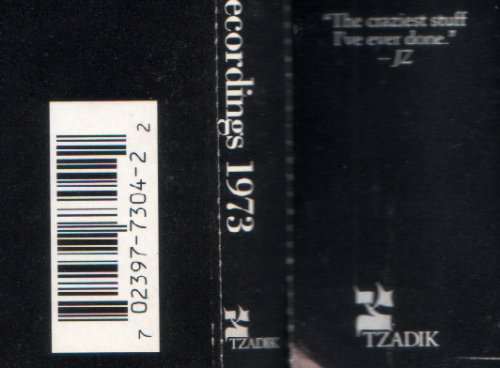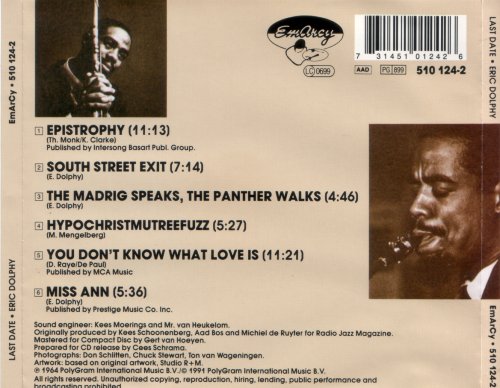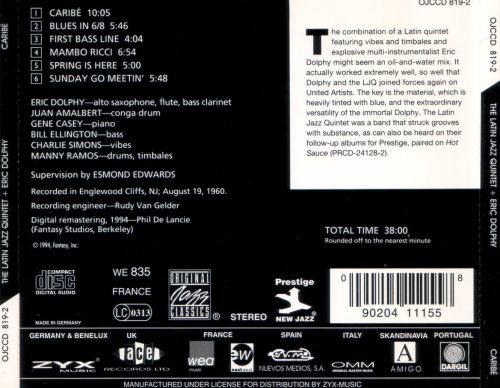How to Identify Labels: Difference between revisions
PavanChander (talk | contribs) m (Post merge cleanup.) |
m (→1999 CD example: Fix typo mentioned by strat666 on IRC) |
||
| (18 intermediate revisions by 9 users not shown) | |||
| Line 1: | Line 1: | ||
Have you ever looked at a release and wondered 'which of these companies/logos is the ''label''?' This how-to guide explains the difference between record companies and labels (imprints), how to identify them, and walks through some examples. It mainly focuses on physical releases. |
|||
{{LabelHeader}} |
|||
For other label-related pages please see [[How to Identify Labels#Additional information|additional information.]] |
|||
== What is a label? == |
|||
==The simple cases== |
|||
A label is a record company's [[wikipedia:Imprint_(trade_name)|'imprint' (its trademark or logo)]], that it uses to release music. Generally speaking, 'Label' and 'imprint' means the same thing - ''but'' in MusicBrainz we sometimes also create label entities for companies. Because of this, in this guide we will sometimes use the term 'imprint' instead of 'label'. |
|||
For more information on these entities see the [[Label]] page. |
|||
Before the massive mergers that occurred in the music industry during the last part of the 20th century, and for most labels, the situation was pretty simple: a single company would issue releases "using" a single imprint (its trademark, or logo). |
|||
==Should I use the company name or the imprint for the label?== |
|||
===A 1959 vinyl example=== |
|||
In most cases you should only use '''imprints''', particularly in the label field. Most editors will only need to use/create imprint label entities in MusicBrainz. |
|||
[[album:76bf12c5-b34e-416b-a11a-c6e58d9e7c26|Cecil Taylor, Looking Ahead]] |
|||
When needed, companies that aren't also imprints (for instance, a holding company that owns various imprints) can be added as labels. The reason for doing this is usually to represent the history and relationships between imprints in a meaningful way, or to use the manufacturing and distribution relationships. Note that there is no need to "de-duplicate" companies from imprints when their names are very similar. |
|||
On the front cover, the imprint name is featured on the top right hand ("Contemporary Records"), alongside the catalog number ("S7562"): |
|||
==Simple cases== |
|||
Sometimes the situation is simple: a single company has issued a release through a single imprint (its trademark or logo). The name of the record company and the imprint it uses may be identical, but not always. |
|||
===1959 vinyl example=== |
|||
[[release:1ace6a48-ac3a-48ae-9aeb-2f0e6cd3a5c2|Cecil Taylor, Looking Ahead!]] |
|||
On the front cover, top right, the ''imprint'' name is printed ("Contemporary Records") alongside the catalog number ("S7562"): |
|||
* [[Image:looking1.jpg]] |
* [[Image:looking1.jpg]] |
||
On the back sleeve, |
On the back sleeve, bottom, the ''company'' name is printed ("Contemporary Records, Inc."): |
||
* [[Image:looking2.jpg]] |
* [[Image:looking2.jpg]] |
||
On the medium the ''imprint'' name is printed ("Contemporary Records") prominently: |
|||
The imprint name is also featured prominently on the inner sticker of the vinyl (this is actually "the imprint"): |
|||
* [[Image:looking3.jpg]] |
* [[Image:looking3.jpg]] |
||
We have identified the imprint name (Contemporary Records), which we will use. The full company name is slightly different (Contemporary Records, Inc), and we can ignore it for label-related fields and purposes. |
|||
=== |
===1995 CD example=== |
||
[[ |
[[release:8083d9ed-e8a1-4d7e-8baf-056a5e2f2a38|John Zorn, First Recordings 1973]] |
||
On the obi strip the ''imprint'' is printed ("Tzadik"): |
|||
Here also it's pretty straight forward. The label name appears both on the obi strip (along with the barcode) |
|||
* [[Image:firstrec1.jpg]] |
* [[Image:firstrec1.jpg]] |
||
On the back sleeve, bottom, the ''imprint'' name is printed ("Tzadik"): |
|||
* [[Image:firstrec2.jpg]] |
* [[Image:firstrec2.jpg]] |
||
At the bottom, next to the copyright, the ''company'' name is also printed ("Tzadik"). It is the same as the imprint. |
|||
In a lot of cases you'll also find the imprint on the cd and/or the spine. |
|||
The catalog number appears on the side of the box (TZ 7304). |
|||
We have identified the imprint name (Tzadik), which we will use. The full company name is the same, and we can ignore it. |
|||
Note that in a lot of cases, you'll find the imprint on the cd itself as well, or on the side of the box. |
|||
==Complex cases== |
|||
==Don't get fooled by the company name holding the imprint== |
|||
Sometimes the situation is complex, and: |
|||
At some point, though, the de-correlation between companies and imprints went on, quickly moving toward a situation where in a lot of cases: |
|||
* a company has |
* a company has a different name to the imprint it controls |
||
* a |
* a company controls several different imprints with different names. |
||
These situations are often the result of mergers/label purchases, or when a larger company wants to create different labels for different markets/genres. |
|||
=== 1991 CD example === |
|||
The relevant part, which you should use in release events, is still the imprint! |
|||
[[release:d6674971-f530-4dfe-a55a-8a37dfd3df6d|Eric Dolphy, Last Date]] |
|||
On the back cover, top right, the ''imprint'' logo is printed ("Emarcy"), as well as the imprint name on the spine. On the bottom left, next to the copyright, the ''company'' name is printed ("PolyGram"): |
|||
Here, a relatively straight-forward case: the Emarcy company was long deceased in 1991 - though its imprint was owned by Polygram (eg: Polygram bought the rights to use the "Emarcy" trademark as a label, and to issue under that name). |
|||
[[Album:d6674971-f530-4dfe-a55a-8a37dfd3df6d|Eric Dolphy Last Date]] (from 1991) |
|||
* [[Image:lastdate.jpg]] |
* [[Image:lastdate.jpg]] |
||
Note that this one is relatively easy (the "Polygram" name is quite discreet - though obviously the copyright owner and producer of the release), while the Emarcy logo is the one featured, and is indicated on the side of the box. Some cases are a bit more complicated. Nevertheless, again here the correct label to use is the imprint, Emarcy. |
|||
This example is relatively straight-forward: The Emarcy company ended in 1991, after which PolyGram bought the rights to its imprint. The PolyGram text is discreet, while the Emarcy logo is featured prominently, and is indicated on the spine as well. The correct label to use is the imprint, Emarcy. |
|||
On the other hand, be careful that in some cases a company owning a specific imprint, along with the right to issue the catalog of the former owner, may do so using a new (different) imprint while still reproducing the original imprint logo as well as to indicate the origin of the stuff! Such cases might prove a little more complicated and should be handled on a case by case basis (see the OJC example below). |
|||
=== 1999 CD example === |
|||
==Don't get fooled by the manufacturer or the distributor== |
|||
[[release:a4df9ee8-b1a2-4d5d-93e2-8aeaf74d47f0|Tom Waits, Mule Variations]] |
|||
On the back cover, bottom, the logo and text of both the ''imprint'' and the ''company'' are printed: |
|||
The music business getting more complex and globalized, the making of releases also became more complicated and began involving more than the company producing the release (usually at least an additional manufacturer and a distributor), and a (somewhat) recent trend pushed to a state where these companies would ''also'' print their own logos on the sleeves, alongside the ''producing'' label logo. |
|||
* [[Image:mule-variations.jpg]] |
|||
Right now, we don't care at all about manufacturers - and almost neither about distributors (at least, newcomers editors are heavily discouraged to dabble with distributors editing), so, the right choice is the label ''producing'' the release. |
|||
Note also the label code, above the barcode. |
|||
Usually, you can identify the record ''company'' by taking a look at the producing ((p)) or copyright ((c)) mention. Then you can probably identify the imprint name from that. |
|||
This example is more complicated: It follows a trend where the production of releases has become more complicated, and involves more companies, leading manufacturers and distributors to start including their logos as well. For the purposes of this guide we want to ignore these, and identify the label ''producing'' the release. |
|||
The [[Label Code|LabelCode]] may also be a very helpful piece of information in identifying the correct label. |
|||
Usually we can identify the ''company'' by looking at the production (p) and/or copyright (c) credit. In this case that text credits "Anti, Inc." Next to it we can read "Manufactured and distributed by Epitaph Europe". From this we can reasonably assume that Anti is the imprint (label) of Anti, Inc., while the Epitaph logo belongs to the manufacturer/distributor. We ignore the manufacturers and distributors, so we can use Anti as the label here. |
|||
Here, [[Album:a4df9ee8-b1a2-4d5d-93e2-8aeaf74d47f0|Tom Waits Mule Variations]], a release by the ''Anti'' label (distributed and manufactured in Europe by Epitaph) (Anti has [[Label Code|LabelCode]] 02576). |
|||
* [[Image:mule-variations.jpg]] |
|||
If you are still unsure, this release gives us another very useful piece of information, the [[Label Code|label code]]. Anti has the label code 02576, printed above the barcode, so we can definitively say that it is the main imprint for this release. |
|||
Obviously, CD can very well feature a number of random logos (distributor, manufacturer, holding company, artist manager company), and sorting these may turn out more complicated than above. |
|||
Careful: A company that owns an specific imprint, may reissue a release so using a new (different) imprint while still reproducing the original imprint logo, to indicate the origin of the release. This can be complicated and should be handled on a case by case basis (see the OJC example below). |
|||
Still, using the [[Label Code|LabelCode]], the copyright/produced mentions, eliminating these mentioned in the "distributed/manufactured" and the holding company usually proves efficient to sort the ins and out. |
|||
== |
== Incredible cases == |
||
In situations like the following, don't be afraid to ask the community or subscribers to labels for help. |
|||
'''1994 CD example''' |
|||
In some cases, you really call for troubles. If you experience difficulties, your best shot is probably to ping one of the subscribers for the artist/label concerned, upload a sleeve scan and ask him/her for help. |
|||
[[release:a84c2416-8aea-4fa6-a052-61662fca5a03|The Latin Jazz Quintet + Eric Dolphy, Caribé]] |
|||
Here is such an interesting case, in its full insane glory... |
|||
* [[Image:latinjazz.jpg]] |
|||
Everything is printed everywhere: |
|||
How to proceed? |
|||
* [[Image:latinjazz.jpg|alt=|500x500px]] |
|||
The easy part: |
|||
* ignore ZYX as the manufacturer |
|||
* ignore the distributors |
|||
How to proceed? |
|||
That leaves us with Fantasy (credited as producing the release), Prestige, Original Jazz Classics, LC 0313 and catalog number OJCCD-819-2. |
|||
Now you need to dig the history books. Though Fantasy (which is also an imprint!) is credited as (c), a little research will reveal that the Fantasy ''company'' were actually using ''Original Jazz Classics'' as an imprint to reissue stuff they owned from defunct labels, including ''Prestige''. Though the label code used here is the one of ''Prestige'', they insisted on using the OJC imprint with its own catalog scheme (typical OJCXX-XXXX) (while still featuring the imprint (and here label code!) of the original label), while later on during their history they reversed that trend and discarded the OJC line to come back to reusing the original imprint names... |
|||
A quick look in the database at the [[Label:4876cd23-c4ab-4ac5-9b49-e8ed14bc22f8|Original Jazz Classics]] entry will show you (a lot) more of these. |
|||
Either Prestige or OJC would fit here, and the choice is somewhat an arbitrary one, though, and based on Fantasy history, and following a number of other (serious) discographic resources, it was decided to use OJC for these. |
|||
Note that, on the other hand, the Japanese reprint of that stuff that Fantasy allowed Victor to put out was using solely the Prestige logo (making it technically a Prestige release)! |
|||
==When to use a company name instead of an imprint in MusicBrainz?== |
|||
Again, in 99% of the cases, you should only use '''imprints''' in release events, and most editors will only need to use/create '''imprints'''. |
|||
Using as labels '''companies that are not also imprints''' is quite rare and should be reserved to these editors who are willing to do ground-work on structuring imprints and injecting a sense of history into them (especially useful for old labels that went through many different historical phases). Such editing usually requires that you have a lot of specific knowledge about the history of the peoples and companies that made the imprints, and that you have a good judgment to achieve a decent balance between accurate and complete information, while still keeping the hierarchy in a simple state enough to make it useful (in helping structure the imprints list) and avoid the cluttering temptation of off-topic data (financial or economical details that are not directly relevant, etc). |
|||
Remember that the provision made to be able to use ''companies'' labels was only meant to ''help'' organizing and relating ''imprints'', not to make things more confusing / complicated for newcomers. |
|||
The easy part, we can: |
|||
==What online databases shall I use to find labels info about releases?== |
|||
* ignore ZYX as the manufacturer (see text printed at the very bottom) |
|||
* ignore the distributors (the bottom row logos, with regions printed above them). |
|||
That leaves us with (c) Fantasy, Prestige, Original Jazz Classics, and LC 0313 and catalog number OJCCD-819-2. |
|||
None! :-) |
|||
For this one we need to dig into the history books. Though Fantasy (which is also an imprint) is credited as (c), research reveals that the Fantasy ''company'' used the Original Jazz Classics ''imprint'' to reissue music they owned from defunct companies, including Prestige and the Prestige ''imprint''. Confusingly, the label code used here is for Prestige, but Fantasy has used the OJC imprint with its own catalog scheme (typical OJCXX-XXXX) on the spine. You can explore the [[Label:4876cd23-c4ab-4ac5-9b49-e8ed14bc22f8|Original Jazz Classics]] label in MusicBrainz to see a lot more of these types of releases - later on Fantasy would discard the OJC line and just reuse the original imprints instead. |
|||
Unless you have some serious knowledge about the release you're editing and/or the given label, it's very unlikely that you will achieve any decent result by just sourcing a random online database, which are just like everybody else: completely lost! Most times you'll find out that online store X randomly uses the distributor/manufacturer name, duplicates entries with the same UPC but different labels, shortens the labels names, mash-up the producing/distributing labels names, etc. |
|||
Either Prestige or the OJC ''imprints'' would fit here, and the choice is somewhat an arbitrary one. Based on Fantasy's history, and following a number of other (serious) discographic resources, it was decided to use OJC for these. |
|||
The only '''serious''' source is the release sleeve! |
|||
Interestingly, Japanese reissues that Fantasy allowed Victor to release only used the Prestige logo, making them Prestige releases. |
|||
==But, I mean, are they so bad?== |
|||
== Other databases == |
|||
A short and subjective review: |
|||
* Amazon: is just horrible. Please don't use AMZ to source label names... |
|||
* Barnes and Nobble: from average to decent, though still wrong quite sometimes |
|||
* ciao: random |
|||
* cduniverse: random |
|||
* hbdirect: one of the most serious. Their data is usually very decent |
|||
* ebay: good as long as you can peek at the sleeve, quite bad otherwise |
|||
* priceminister: good as long as you can peek at the sleeve, very bad otherwise |
|||
* discogs: from average to good, though they have a different (sometimes incompatible) label organization than us, and also have their share of defects |
|||
* [[All Mangled Guide|AllMangledGuide]]: avoid... |
|||
* Wackypedia: somewhat decent, though they really have very little data and often confuse/don't care about editions... |
|||
* others? |
|||
The only '''serious''' source for label information is the release sleeve. |
|||
{{LabelFooter}} |
|||
Online stores/databases inconsistently use the distributor/manufacturer/label/imprint name, abbreviates names, duplicates entries, and so on. Proceed with caution and use your best judgement when using other sources as references. |
|||
----{{DocumentationFooter|1.0|dmppanda}} |
|||
A short list of common sources: |
|||
* All Music Guide: Bad |
|||
* Amazon: Very bad |
|||
* Barnes and Noble: Mixed |
|||
* CD Universe: Mixed |
|||
* ciao: Mixed |
|||
* Discogs: Okay, but be aware that they have some differing label/imprint guidelines to MusicBrainz |
|||
* ebay: Bad, unless you are looking at sleeve scans/photos |
|||
* HB Direct: Good |
|||
* Rakuten: Bad, unless you are looking at sleeve scans/photos |
|||
* Wikipedia: Mixed, often grouping different releases/editions |
|||
==Additional information== |
|||
* [[Label]] |
|||
*[[Style/Unknown_and_untitled/Special_purpose_label|Special purpose labels]] |
|||
*[[Label/FAQ|Label FAQ]] |
|||
*[[Subscription|Label subscriptions]] |
|||
*[[Label/Resources|Extra resources]] |
|||
{{HowtoBox}} |
|||
[[Category:To Be Reviewed]] [[Category:How To]] [[Category:Label]] [[Category:WikiDocs Page]] |
[[Category:To Be Reviewed]] [[Category:How To]] [[Category:Label]] [[Category:WikiDocs Page]] |
||
Latest revision as of 11:08, 16 March 2024
Have you ever looked at a release and wondered 'which of these companies/logos is the label?' This how-to guide explains the difference between record companies and labels (imprints), how to identify them, and walks through some examples. It mainly focuses on physical releases.
For other label-related pages please see additional information.
What is a label?
A label is a record company's 'imprint' (its trademark or logo), that it uses to release music. Generally speaking, 'Label' and 'imprint' means the same thing - but in MusicBrainz we sometimes also create label entities for companies. Because of this, in this guide we will sometimes use the term 'imprint' instead of 'label'.
For more information on these entities see the Label page.
Should I use the company name or the imprint for the label?
In most cases you should only use imprints, particularly in the label field. Most editors will only need to use/create imprint label entities in MusicBrainz.
When needed, companies that aren't also imprints (for instance, a holding company that owns various imprints) can be added as labels. The reason for doing this is usually to represent the history and relationships between imprints in a meaningful way, or to use the manufacturing and distribution relationships. Note that there is no need to "de-duplicate" companies from imprints when their names are very similar.
Simple cases
Sometimes the situation is simple: a single company has issued a release through a single imprint (its trademark or logo). The name of the record company and the imprint it uses may be identical, but not always.
1959 vinyl example
On the front cover, top right, the imprint name is printed ("Contemporary Records") alongside the catalog number ("S7562"):
On the back sleeve, bottom, the company name is printed ("Contemporary Records, Inc."):
On the medium the imprint name is printed ("Contemporary Records") prominently:
We have identified the imprint name (Contemporary Records), which we will use. The full company name is slightly different (Contemporary Records, Inc), and we can ignore it for label-related fields and purposes.
1995 CD example
John Zorn, First Recordings 1973
On the obi strip the imprint is printed ("Tzadik"):
On the back sleeve, bottom, the imprint name is printed ("Tzadik"):
At the bottom, next to the copyright, the company name is also printed ("Tzadik"). It is the same as the imprint.
In a lot of cases you'll also find the imprint on the cd and/or the spine.
We have identified the imprint name (Tzadik), which we will use. The full company name is the same, and we can ignore it.
Complex cases
Sometimes the situation is complex, and:
- a company has a different name to the imprint it controls
- a company controls several different imprints with different names.
These situations are often the result of mergers/label purchases, or when a larger company wants to create different labels for different markets/genres.
1991 CD example
On the back cover, top right, the imprint logo is printed ("Emarcy"), as well as the imprint name on the spine. On the bottom left, next to the copyright, the company name is printed ("PolyGram"):
This example is relatively straight-forward: The Emarcy company ended in 1991, after which PolyGram bought the rights to its imprint. The PolyGram text is discreet, while the Emarcy logo is featured prominently, and is indicated on the spine as well. The correct label to use is the imprint, Emarcy.
1999 CD example
On the back cover, bottom, the logo and text of both the imprint and the company are printed:
Note also the label code, above the barcode.
This example is more complicated: It follows a trend where the production of releases has become more complicated, and involves more companies, leading manufacturers and distributors to start including their logos as well. For the purposes of this guide we want to ignore these, and identify the label producing the release.
Usually we can identify the company by looking at the production (p) and/or copyright (c) credit. In this case that text credits "Anti, Inc." Next to it we can read "Manufactured and distributed by Epitaph Europe". From this we can reasonably assume that Anti is the imprint (label) of Anti, Inc., while the Epitaph logo belongs to the manufacturer/distributor. We ignore the manufacturers and distributors, so we can use Anti as the label here.
If you are still unsure, this release gives us another very useful piece of information, the label code. Anti has the label code 02576, printed above the barcode, so we can definitively say that it is the main imprint for this release.
Careful: A company that owns an specific imprint, may reissue a release so using a new (different) imprint while still reproducing the original imprint logo, to indicate the origin of the release. This can be complicated and should be handled on a case by case basis (see the OJC example below).
Incredible cases
In situations like the following, don't be afraid to ask the community or subscribers to labels for help.
1994 CD example
The Latin Jazz Quintet + Eric Dolphy, Caribé
Everything is printed everywhere:
How to proceed?
The easy part, we can:
- ignore ZYX as the manufacturer (see text printed at the very bottom)
- ignore the distributors (the bottom row logos, with regions printed above them).
That leaves us with (c) Fantasy, Prestige, Original Jazz Classics, and LC 0313 and catalog number OJCCD-819-2.
For this one we need to dig into the history books. Though Fantasy (which is also an imprint) is credited as (c), research reveals that the Fantasy company used the Original Jazz Classics imprint to reissue music they owned from defunct companies, including Prestige and the Prestige imprint. Confusingly, the label code used here is for Prestige, but Fantasy has used the OJC imprint with its own catalog scheme (typical OJCXX-XXXX) on the spine. You can explore the Original Jazz Classics label in MusicBrainz to see a lot more of these types of releases - later on Fantasy would discard the OJC line and just reuse the original imprints instead.
Either Prestige or the OJC imprints would fit here, and the choice is somewhat an arbitrary one. Based on Fantasy's history, and following a number of other (serious) discographic resources, it was decided to use OJC for these.
Interestingly, Japanese reissues that Fantasy allowed Victor to release only used the Prestige logo, making them Prestige releases.
Other databases
The only serious source for label information is the release sleeve.
Online stores/databases inconsistently use the distributor/manufacturer/label/imprint name, abbreviates names, duplicates entries, and so on. Proceed with caution and use your best judgement when using other sources as references.
A short list of common sources:
- All Music Guide: Bad
- Amazon: Very bad
- Barnes and Noble: Mixed
- CD Universe: Mixed
- ciao: Mixed
- Discogs: Okay, but be aware that they have some differing label/imprint guidelines to MusicBrainz
- ebay: Bad, unless you are looking at sleeve scans/photos
- HB Direct: Good
- Rakuten: Bad, unless you are looking at sleeve scans/photos
- Wikipedia: Mixed, often grouping different releases/editions
Additional information
| How-To Pages | |
|---|---|
| Introductory Guides | Beginners' Guide · Creating an Account · Editing · Voting · Writing Edit Notes |
| Basic How-Tos | Adding an Artist · Adding Relationships · Using the Relationship Editor · Using Artist Credits · Adding a Release · Works · Events · Places · Series · Instruments · Areas |
| Specific How-Tos | Merging Releases · Merging Recordings · Removing Entities · Adding Cover Art · Identifying Labels · Splitting Artists · Adding Standalone Recordings · Adding Disc IDs · Cancelling Edits · Searching for Edits · Reporting a User · Reporting an Issue · Working with AcoustIDs · Tagging Files with Picard |
